| Origami Heaven A paperfolding
paradise
The website of
writer and paperfolding designer David Mitchell
x
|
| |
| Modular Method and
Method Analogues |
|
| |
| Modular
method is the way in which the surface of the form is
made up of, or broken down into, individual modules. The
same modular form can often be constructed using many
different modular methods. Here, for instance, are just
a few of the ways that it is possible to construct an
8-point Stubby Star, one of the classic forms of modular
origami.
|
| |
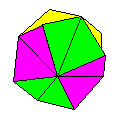 |
|
The
Epsilon Star This design, also known as Kenneth
Kawamura's Harlequin Star or Robert Neale's Blue
Balloon, is a compact weave design made from six
preliminary folds.
|
|
| |
| From Sonobe Modules This picture shows
what the 8-point Stubby Star looks like when made
from twelve standard Sonobe modules.
|
|
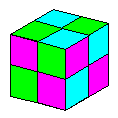 |
|
| |
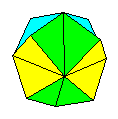 |
|
From
corner-pocket Sonobes And this shows one
what it looks like when made from corner-pocket
Sonobes instead.
|
|
| |
| Star of Wonder This design is my
Star of Wonder, which looks identical to the
corner-pocket Sonobe version but is actually made
from twelve delta modules using an entirely
different modular method.
|
|
 |
|
| |
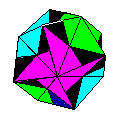 |
|
Spiral
Cluster 48 This design is made using 48
identical modules. Four first go together to form
a compound corner-pocket module and then the
twelve compound modules are combined to create
the form.
|
|
| |
| The Contrast Epsilon
Star Finally
this is my Contrast Epsilon Star which use the
same modular method as the Epsilon Star but has a
very different appearance because of the colour
change introduced when folding the modules.
|
|
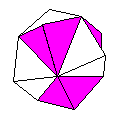 |
|
| |
| Conversely
it possible to construct many different modular forms
using the same modular method but reconfiguring the
modules to vary the appearance of the form. Such designs
can be said to be method analogues of each other. Here
are some well known hexoidal (6-part) designs that are
all method analogues of each other but are held together
by means of several different assembly systems. |
| |
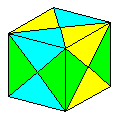 |
|
Kenneth
Kawamura's Blintz Cube A wraparound weave
design from six blintzed squares.
|
|
| |
| Robert Neale's
Octahedron The classic self-tab-and-pocket
design from six waterbomb bases.
|
|
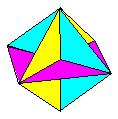 |
|
| |
 |
|
The
Epsilon Star A compact weave design made from six
preliminary folds.
|
|
| |
| Ed Sullivan's XYZ This design can be
achieved by sinking each of the vertices of
Robert Neale's Octahedron to the halfway point.
It is probably best characterised as a wraparound
weave design.
|
|
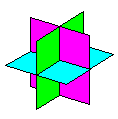 |
|
| |
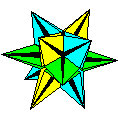 |
|
Philip
Shen's Omega Star This design was developed from XYZ
by folding all the outside edges inwards.
|
|
| |
| The 6-part Enigma
Cube Finally
this complex shape can be derived from XYZ by
first bringing the internal corners outwards and
then by pulling the central external corners
apart.
|
|
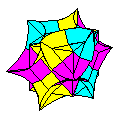 |
|
| |
| |









